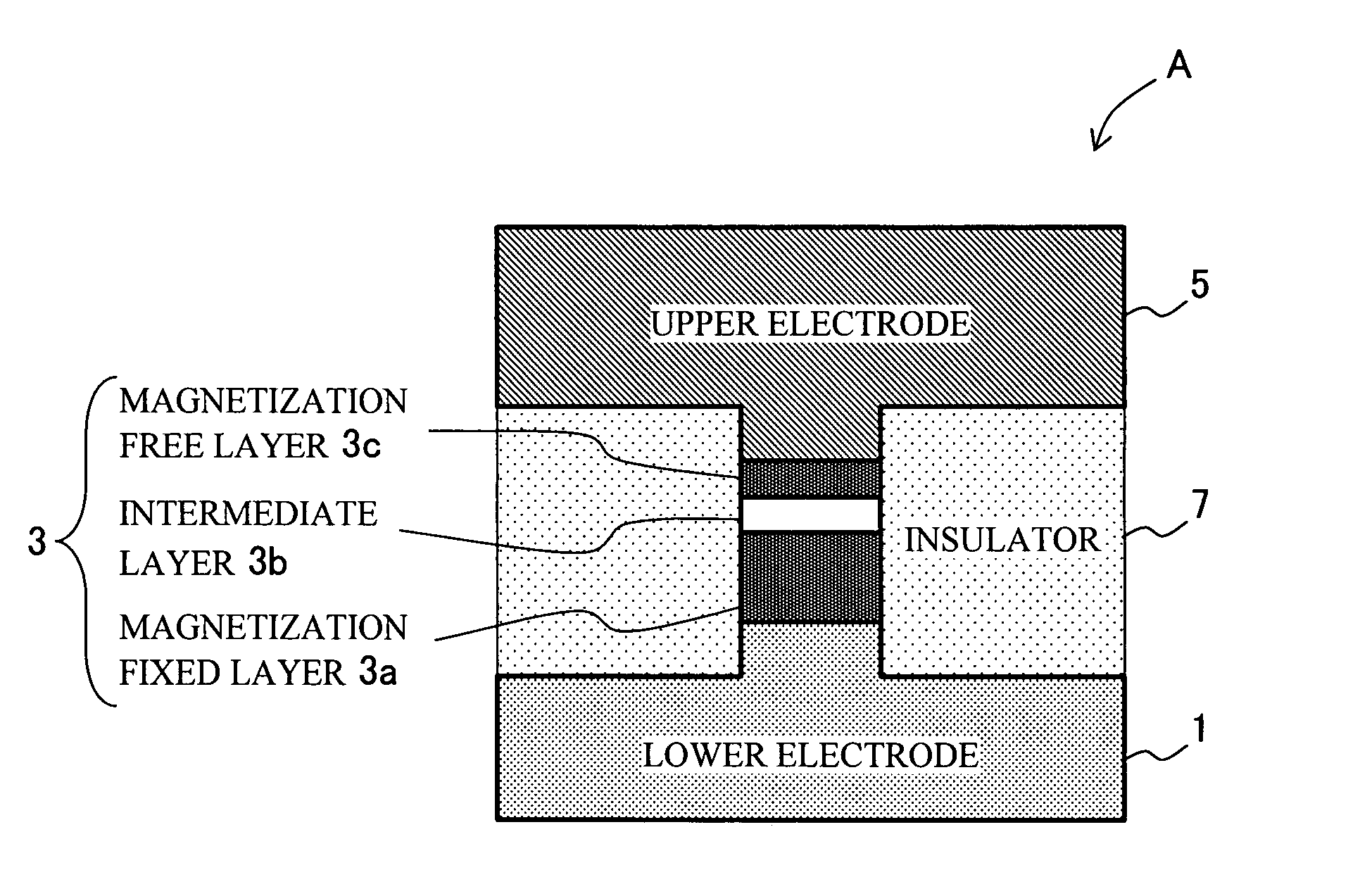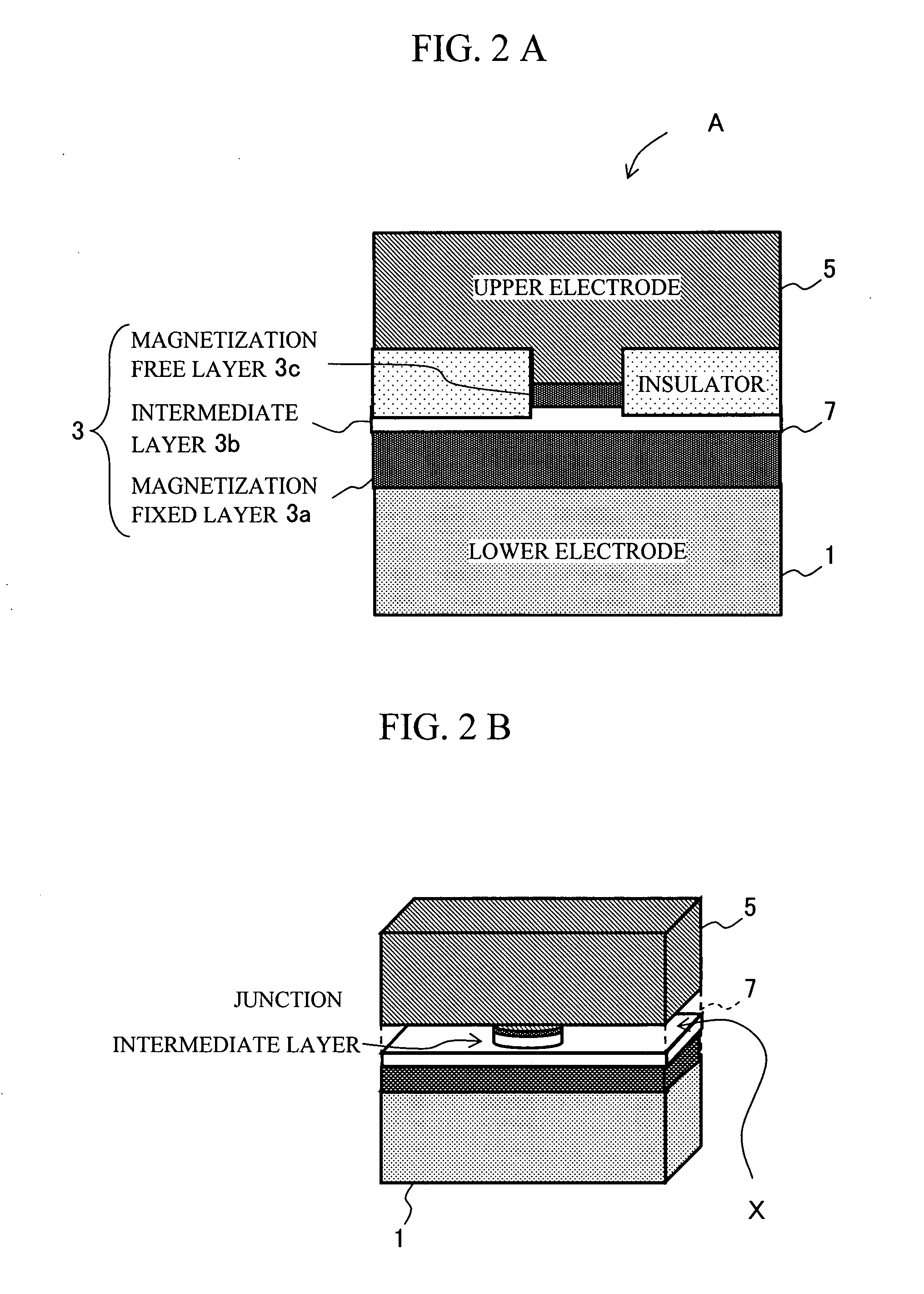Microwave Transmission Line Integrated Microwave Generating Element and Microwave Transmission Line Integrated Microwave Detecting Element
a technology of integrated microwave generating element and integrated microwave, which is applied in the direction of oscillator, antenna, semiconductor/solid-state device details, etc., can solve the problems of difficult size reduction, poor oscillation efficiency, and gunn oscillator, so as to reduce the size of the apparatus, eliminate the loss of wires, and improve efficiency
- Summary
- Abstract
- Description
- Claims
- Application Information
AI Technical Summary
Benefits of technology
Problems solved by technology
Method used
Image
Examples
example 1
[0091]In the following, a microwave generating element and a microwave detecting element according to an embodiment of the invention are described. The present embodiment employs a ferromagnetic-multilayer-film magnetoresistance element having a structure such that current flows through a magnetization free layer / intermediate layer / magnetization fixed layer (the top-bottom positions of the magnetization free layer and the magnetization fixed layer may be reversed) formed on a substrate (such as, e.g., a columnar structure having a minute cross-sectional area perpendicular to the plane of the multilayer film). In the case of the microwave oscillating element, microwave is produced by magnetization resonance oscillation upon causing a flow of DC current. In the case of the microwave detecting element, DC voltage is produced by the detecting action of magnetization resonance oscillation upon irradiation of microwave.
[0092]First, an example of the structure of the magnetoresistance elem...
example 2
[0100]In the following, a magnetoresistance element used as a microwave generating element or a microwave detecting element according to the present embodiment is described with reference to the drawings. This embodiment adopts a structure (referred to as a point-contact configuration) in which the upper electrode (or lower electrode) alone is reduced in size, and the electrode is in contact with a multilayer film, of which the magnetoresistance element is formed, in a minute cross-sectional area. FIG. 3 is a cross section of an example of the magnetoresistance element of the present embodiment used for microwave generation or microwave detection. FIG. 4 is a perspective view of the magnetoresistance element. While FIGS. 3 and 4 show the example in which the upper electrode alone is reduced in size in point-contact configuration, it is also possible to adopt point-contact configuration on the lower electrode side. As shown in FIGS. 3 and 4, the magnetoresistance element A of the pre...
example 3
[0102]In the following, an example is described in which the above magnetoresistance element is used on the microwave transmission line. In the present embodiment, the magnetoresistance element is used as a microwave oscillation source (or detection element). In this case, the magnetoresistance element may be greatly smaller than a conventional microwave transmission circuit, and may be of a size smaller than 1 micron square, for example. Therefore, as shown in FIG. 5, by placing the magnetoresistance element A between a lower stripline 11 and an upper stripline 15, the element can be installed directly at the end of the microwave transmission line. In this case, the lower stripline 11 and the upper stripline 15 are electrically connected to each other via the magnetoresistance element alone. While in the example of FIG. 5 the magnetoresistance element is disposed on a coplanar-type stripline as the microwave transmission line, a slotline-type stripline may also be used. Preferably,...
PUM
 Login to View More
Login to View More Abstract
Description
Claims
Application Information
 Login to View More
Login to View More - R&D
- Intellectual Property
- Life Sciences
- Materials
- Tech Scout
- Unparalleled Data Quality
- Higher Quality Content
- 60% Fewer Hallucinations
Browse by: Latest US Patents, China's latest patents, Technical Efficacy Thesaurus, Application Domain, Technology Topic, Popular Technical Reports.
© 2025 PatSnap. All rights reserved.Legal|Privacy policy|Modern Slavery Act Transparency Statement|Sitemap|About US| Contact US: help@patsnap.com



